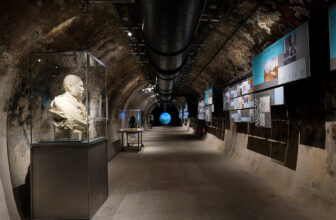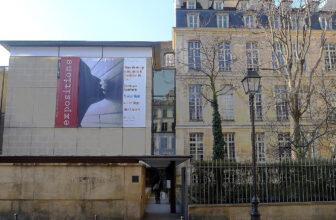
What is the Musée de l’Orangerie Famous For, and Is It Worth Visiting?
Nestled in the heart of Paris, the Musée de l’Orangerie is a cultural gem that captivates art enthusiasts and casual visitors alike. Located in the picturesque Tuileries Gardens, this museum offers an intimate yet profound journey into the world of Impressionist and Modern art. But what exactly makes the Musée de l’Orangerie so famous, and is it worth adding to your Paris itinerary? Let’s explore.
A Brief History of the Musée de l’Orangerie
The Musée de l’Orangerie has a fascinating history. Originally built in 1852 during the reign of Napoleon III, the building was designed as a greenhouse, an “orangerie”, to shelter orange trees from the Tuileries Gardens during winter. Its location, near the Seine and surrounded by lush greenery, made it a functional yet aesthetically pleasing structure.
By the early 20th century, the building had transitioned from its horticultural origins to an artistic venue. In 1922, Claude Monet, one of the pioneers of Impressionism, selected the Orangerie as the home for his monumental series of paintings, Les Nymphéas (Water Lilies). This marked the beginning of its transformation into a premier art museum. Officially inaugurated as the Musée de l’Orangerie in 1927, the museum has since evolved into a celebrated institution, housing a remarkable collection of Impressionist and Modern masterpieces.
What Is the Musée de l’Orangerie Famous For?
1. Monet’s Water Lilies: A Masterpiece in Immersion
The undeniable centerpiece of the Musée de l’Orangerie is Monet’s Les Nymphéas. This breathtaking series of eight large-scale panels spans two oval-shaped rooms, specifically designed to create an immersive experience. Monet envisioned these paintings as a “haven of peaceful meditation,” and they deliver just that.
The curved walls and natural lighting enhance the ethereal quality of the water lilies, capturing their reflections, movement, and subtle play of light. The paintings represent the culmination of Monet’s artistic vision, as he sought to capture the essence of nature in a way that transcends time and space.
2. The Jean Walter and Paul Guillaume Collection
Beyond Monet’s masterpieces, the Musée de l’Orangerie is home to the exceptional Jean Walter and Paul Guillaume Collection. This carefully curated selection of works spans the late 19th and early 20th centuries, showcasing pivotal movements in art history.
Key artists featured in this collection include:
- Paul Cézanne: Known for his revolutionary approach to form and composition, Cézanne’s works laid the groundwork for modern art.
- Henri Matisse: A leading figure in Fauvism, Matisse’s bold use of color and expressive lines are prominently displayed.
- Amedeo Modigliani: Famous for his elongated portraits and unique style, Modigliani’s works are a highlight.
- Pablo Picasso: The museum features early works by Picasso, offering a glimpse into his artistic evolution.
- Renoir and Rousseau: These artists bring a touch of classic Impressionism and naive art to the collection.
3. An Intimate Atmosphere
Unlike larger museums such as the Louvre or the Musée d’Orsay, the Musée de l’Orangerie offers an intimate and manageable experience. Its compact size allows visitors to explore its treasures without feeling overwhelmed, making it a perfect destination for those seeking a quieter and more personal art encounter.
Highlights of the Museum
The Water Lily Rooms
The Water Lily Rooms are a marvel of design and artistic intention. Monet worked closely with the architect Camille Lefèvre to ensure that the installation captured the tranquility and expansiveness of his garden in Giverny. The natural light filtering through the skylights complements the artwork, creating an ever-changing interplay of shadows and reflections that mimic the scenes depicted in the paintings.
The Basement Galleries
The lower level of the museum houses the Jean Walter and Paul Guillaume Collection, which provides a rich narrative of artistic innovation during the late 19th and early 20th centuries. This section of the museum is often less crowded, allowing visitors to engage deeply with the artworks on display.
Temporary Exhibitions
The Musée de l’Orangerie regularly hosts temporary exhibitions that delve into specific artists, movements, or themes. These exhibitions often feature loans from other major museums, enriching the visitor experience with fresh perspectives and rare works.
Is the Musée de l’Orangerie Worth Visiting?
1. For Art Lovers
If you have a passion for art, particularly Impressionism and Modernism, the Musée de l’Orangerie is a must-visit. Monet’s Water Lilies alone are worth the trip, offering a once-in-a-lifetime opportunity to experience these iconic works in their intended setting.
The Jean Walter and Paul Guillaume Collection adds depth to the visit, providing a comprehensive overview of the artistic movements that defined the turn of the 20th century. Whether you’re a seasoned art aficionado or a curious newcomer, the museum offers something to inspire and delight.
2. For Those Short on Time
Paris is brimming with world-class museums, and it can be challenging to decide which ones to prioritize. The Musée de l’Orangerie’s compact size and central location make it an ideal choice for travelers with limited time. You can explore the museum thoroughly in just a couple of hours, leaving plenty of time to visit other nearby attractions like the Louvre, the Place de la Concorde, or the Champs-Élysées.
3. For Families and Casual Visitors
The museum’s manageable scale and serene ambiance make it a great option for families or casual visitors who might find larger museums overwhelming. Children and adults alike can appreciate the vibrant colors and dynamic compositions of the artworks, while the tranquil setting offers a welcome respite from the hustle and bustle of the city.
4. For Monet Enthusiasts
For fans of Claude Monet, visiting the Musée de l’Orangerie is a pilgrimage of sorts. Seeing Les Nymphéas in their dedicated space provides unparalleled insight into Monet’s artistic genius and his deep connection to nature.
Practical Information for Visitors
Location and Accessibility
The Musée de l’Orangerie is located at Place de la Concorde, on the western edge of the Tuileries Gardens. Its central location makes it easily accessible by metro, bus, or on foot from many of Paris’s major landmarks.
Opening Hours
The museum is typically open daily, except on Tuesdays and certain public holidays. Opening hours are generally from 9:00 AM to 6:00 PM, but it’s always a good idea to check the official website for the most up-to-date information.
Tickets and Admission
Admission to the Musée de l’Orangerie is reasonably priced, and various discounts are available for students, seniors, and children. The museum is also included in the Paris Museum Pass, which provides access to multiple attractions across the city.
Tips for a Memorable Visit
- Arrive Early or Late: To avoid crowds, plan your visit early in the morning or late in the afternoon.
- Combine with Nearby Attractions: The Tuileries Gardens, the Louvre, and the Musée d’Orsay are all within walking distance, making it easy to create a full day of cultural exploration.
- Take Your Time: While the museum is compact, its treasures deserve unhurried appreciation. Pause to soak in the beauty of Monet’s Water Lilies and take a closer look at the details in the other artworks.
The Musée de l’Orangerie is a sanctuary of art and tranquility in the heart of Paris. Famous for Monet’s Water Lilies and the remarkable Jean Walter and Paul Guillaume Collection, it offers an intimate and enriching experience that appeals to a wide range of visitors.
Whether you’re an art lover, a history enthusiast, or simply looking to enjoy a peaceful moment in the midst of Parisian splendor, the Musée de l’Orangerie is undoubtedly worth a visit. Its unique blend of artistic mastery, historical significance, and serene ambiance ensures that it leaves a lasting impression on all who step through its doors. Image/wikimedia




